|
|
|
Door handles |
||||||||||||||||||||||||||||||||||||||||||||||||||||||||||||||||||||||||||||||||||||||||||||||
|
Another subtle difference between XA, XBs and XCs were the door handles. The XA door handles were separate from the housing in that the housing was a stamped recess in the door skin, whereas on the XB and XC, the housing was an integral part of the handle assembly which fitted into a rectangular hole in the door. XC handles were similar, but in some models either the housing, or the whole assembly was painted black. Also, the XB and XC handles themselves were ribbed. |
||||||||||||||||||||||||||||||||||||||||||||||||||||||||||||||||||||||||||||||||||||||||||||||
 |
||||||||||||||||||||||||||||||||||||||||||||||||||||||||||||||||||||||||||||||||||||||||||||||
|
XA sedan door handle style |
||||||||||||||||||||||||||||||||||||||||||||||||||||||||||||||||||||||||||||||||||||||||||||||
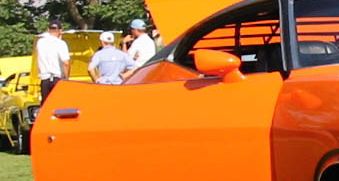 |
||||||||||||||||||||||||||||||||||||||||||||||||||||||||||||||||||||||||||||||||||||||||||||||
|
XA hardtop door handle style. |
||||||||||||||||||||||||||||||||||||||||||||||||||||||||||||||||||||||||||||||||||||||||||||||
|
Note that the recess is painted body colour. |
||||||||||||||||||||||||||||||||||||||||||||||||||||||||||||||||||||||||||||||||||||||||||||||
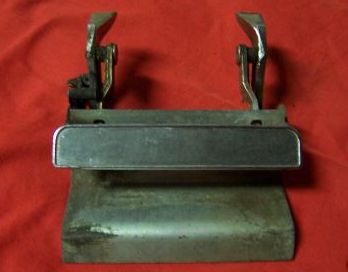 |
||||||||||||||||||||||||||||||||||||||||||||||||||||||||||||||||||||||||||||||||||||||||||||||
|
The XA door handle. |
||||||||||||||||||||||||||||||||||||||||||||||||||||||||||||||||||||||||||||||||||||||||||||||
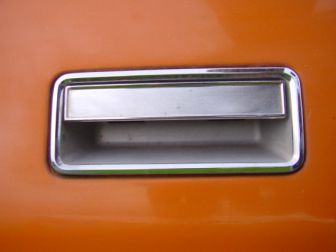 |
||||||||||||||||||||||||||||||||||||||||||||||||||||||||||||||||||||||||||||||||||||||||||||||
|
XB sedan door handle style. |
||||||||||||||||||||||||||||||||||||||||||||||||||||||||||||||||||||||||||||||||||||||||||||||
 |
||||||||||||||||||||||||||||||||||||||||||||||||||||||||||||||||||||||||||||||||||||||||||||||
|
XB hardtop door handle style. |
||||||||||||||||||||||||||||||||||||||||||||||||||||||||||||||||||||||||||||||||||||||||||||||
 |
||||||||||||||||||||||||||||||||||||||||||||||||||||||||||||||||||||||||||||||||||||||||||||||
|
Note that the handle is enclosed in its own ‘chromed’ metal housing, and that the handle is finely ribbed. |
||||||||||||||||||||||||||||||||||||||||||||||||||||||||||||||||||||||||||||||||||||||||||||||
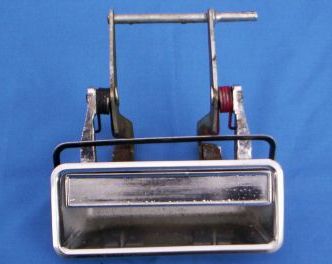 |
||||||||||||||||||||||||||||||||||||||||||||||||||||||||||||||||||||||||||||||||||||||||||||||
 |
||||||||||||||||||||||||||||||||||||||||||||||||||||||||||||||||||||||||||||||||||||||||||||||
|
XC hardtop door handle style, similar to the XB but painted black in some models. |
||||||||||||||||||||||||||||||||||||||||||||||||||||||||||||||||||||||||||||||||||||||||||||||
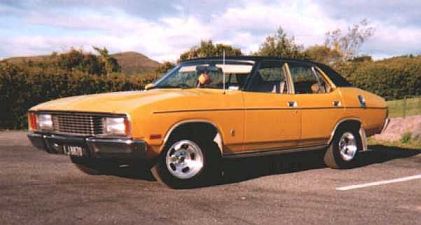 |
||||||||||||||||||||||||||||||||||||||||||||||||||||||||||||||||||||||||||||||||||||||||||||||
|
And chromed in others. |
||||||||||||||||||||||||||||||||||||||||||||||||||||||||||||||||||||||||||||||||||||||||||||||
|
Back to contents |
||||||||||||||||||||||||||||||||||||||||||||||||||||||||||||||||||||||||||||||||||||||||||||||
|
Tail lamps |
||||||||||||||||||||||||||||||||||||||||||||||||||||||||||||||||||||||||||||||||||||||||||||||
|
To accomodate the changes in the styling of the cars, and to conform to new lighting regulations, the tail lamps of the XA, XB and XC altered through the years also. |
||||||||||||||||||||||||||||||||||||||||||||||||||||||||||||||||||||||||||||||||||||||||||||||
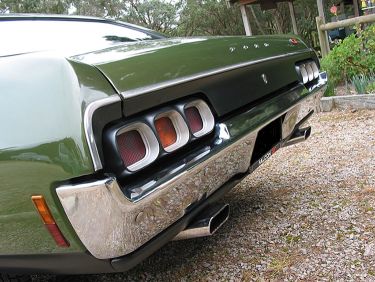 |
||||||||||||||||||||||||||||||||||||||||||||||||||||||||||||||||||||||||||||||||||||||||||||||
|
The XA sedan had very stylised tail lamps, reminiscent of the U.S. Dodge Superbee with separate, prominent lenses. |
||||||||||||||||||||||||||||||||||||||||||||||||||||||||||||||||||||||||||||||||||||||||||||||
 |
||||||||||||||||||||||||||||||||||||||||||||||||||||||||||||||||||||||||||||||||||||||||||||||
 |
||||||||||||||||||||||||||||||||||||||||||||||||||||||||||||||||||||||||||||||||||||||||||||||
|
The XA hardtop had integrated tail lamps, but the lenses were recessed and angled. |
||||||||||||||||||||||||||||||||||||||||||||||||||||||||||||||||||||||||||||||||||||||||||||||
 |
||||||||||||||||||||||||||||||||||||||||||||||||||||||||||||||||||||||||||||||||||||||||||||||
|
Both of these designs, while very stylish, suffered problems from dirt and dust settling in the recess and reducing the effectiveness of the lamps, and were changed for the XB model. |
||||||||||||||||||||||||||||||||||||||||||||||||||||||||||||||||||||||||||||||||||||||||||||||
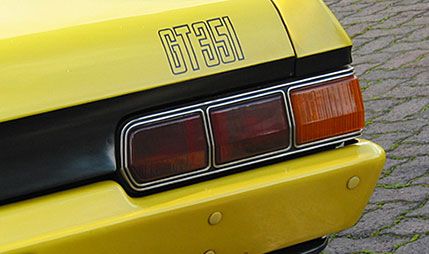 |
||||||||||||||||||||||||||||||||||||||||||||||||||||||||||||||||||||||||||||||||||||||||||||||
|
XB sedan. |
||||||||||||||||||||||||||||||||||||||||||||||||||||||||||||||||||||||||||||||||||||||||||||||
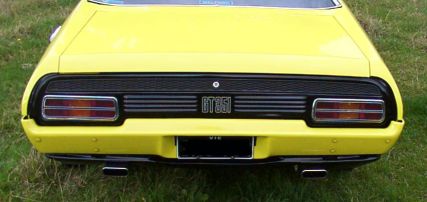 |
||||||||||||||||||||||||||||||||||||||||||||||||||||||||||||||||||||||||||||||||||||||||||||||
|
And XB hardtop Both versions are flush fitting, and on the sedan moved the indicator to the outside. |
||||||||||||||||||||||||||||||||||||||||||||||||||||||||||||||||||||||||||||||||||||||||||||||
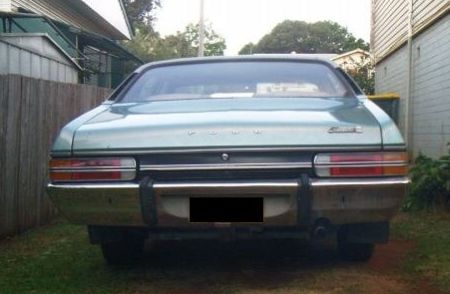 |
||||||||||||||||||||||||||||||||||||||||||||||||||||||||||||||||||||||||||||||||||||||||||||||
|
The XC sedan featured a modification of the XB style, splitting the lens horizontally with a chrome bar to fit in with the trim and fitting white reversing lights. Previously, Australian Fords used the rather unusual system of lighting both side indicator lamps for reversing lamps. |
||||||||||||||||||||||||||||||||||||||||||||||||||||||||||||||||||||||||||||||||||||||||||||||
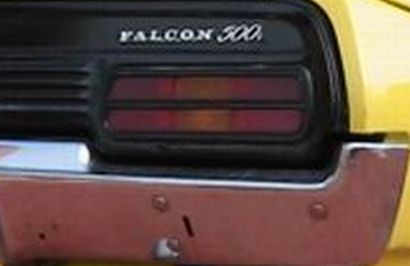 |
||||||||||||||||||||||||||||||||||||||||||||||||||||||||||||||||||||||||||||||||||||||||||||||
|
Whereas the hardtop remained the same as the XB, but painted black on some models. |
||||||||||||||||||||||||||||||||||||||||||||||||||||||||||||||||||||||||||||||||||||||||||||||
|
Back to contents |
||||||||||||||||||||||||||||||||||||||||||||||||||||||||||||||||||||||||||||||||||||||||||||||
|
Visor label |
||||||||||||||||||||||||||||||||||||||||||||||||||||||||||||||||||||||||||||||||||||||||||||||
|
Here is an interesting thing supplied to me by Jaffa from New Zealand. These are the stickers fitted to the driver’s sun visor when the car was new, telling the new owner how the steering lock and ignition switch worked. This decal set was still fitted to the Horn car on another details page. |
||||||||||||||||||||||||||||||||||||||||||||||||||||||||||||||||||||||||||||||||||||||||||||||
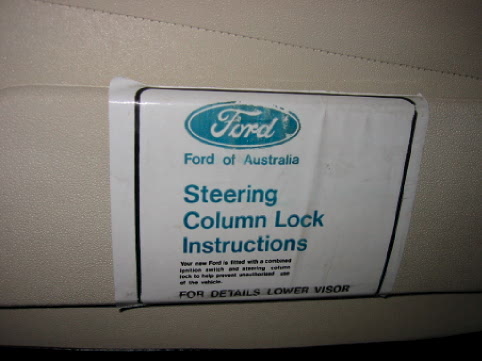 |
||||||||||||||||||||||||||||||||||||||||||||||||||||||||||||||||||||||||||||||||||||||||||||||
 |
||||||||||||||||||||||||||||||||||||||||||||||||||||||||||||||||||||||||||||||||||||||||||||||
|
Back to contents |
||||||||||||||||||||||||||||||||||||||||||||||||||||||||||||||||||||||||||||||||||||||||||||||
|
Glass |
||||||||||||||||||||||||||||||||||||||||||||||||||||||||||||||||||||||||||||||||||||||||||||||
|
Here are some of the markings on glass fitted to Falcons. |
||||||||||||||||||||||||||||||||||||||||||||||||||||||||||||||||||||||||||||||||||||||||||||||
|
The first is from the rear screen on an XB GT hardtop. |
||||||||||||||||||||||||||||||||||||||||||||||||||||||||||||||||||||||||||||||||||||||||||||||
 |
||||||||||||||||||||||||||||||||||||||||||||||||||||||||||||||||||||||||||||||||||||||||||||||
|
It is worth noting that Triplex was/is a UK company. It would be interesting to find out just how much glass they supplied to Ford Australia. The British Standards kite mark will be quite familiar to UK browsers. |
||||||||||||||||||||||||||||||||||||||||||||||||||||||||||||||||||||||||||||||||||||||||||||||
|
This is from a replacement door window on an XB four door. |
||||||||||||||||||||||||||||||||||||||||||||||||||||||||||||||||||||||||||||||||||||||||||||||
 |
||||||||||||||||||||||||||||||||||||||||||||||||||||||||||||||||||||||||||||||||||||||||||||||
|
There are some quite intriguing elements to the above photo which I will now try and explain. |
||||||||||||||||||||||||||||||||||||||||||||||||||||||||||||||||||||||||||||||||||||||||||||||
|
You can see that there is a printed dot above the ‘O’ in ARMOURGLAS, and that ARMOURGLAS is spelt with one ‘S’. This is to allow there to be ten letters in the word, and each letter corresponds to a year in the decade. The years number from the first letter, so, ‘A’ would be 1971, for example; ‘R’ would be 1972, and so on. The decades also roll back around on themselves, so that the last letter, ‘S’ is also the year 1970. |
||||||||||||||||||||||||||||||||||||||||||||||||||||||||||||||||||||||||||||||||||||||||||||||
|
You can also see that there is a printed dot under both the words ‘APPROVED’ and ‘ASRI’. The dots under the first four letters of ‘APPROVED’ mean the four quarters of the year; A = Jan-Mar, P = Apr-Jun, P = Jul-Sept and R = Oct-Dec. Hence the glass above was originally - and originally is an important consideration - struck in the second quarter of 1974, for fitting to an XB Falcon. |
||||||||||||||||||||||||||||||||||||||||||||||||||||||||||||||||||||||||||||||||||||||||||||||
|
The dots under the ‘ASRI’ signify the month within the quarter, and use the ‘SRI’ letters. Hence, in the above glass, the letter under ‘S’ in the ‘ASRI’ indicates the first month of the quarter. |
||||||||||||||||||||||||||||||||||||||||||||||||||||||||||||||||||||||||||||||||||||||||||||||
|
To sum up, the glass pictured above was struck in the first month of the second quarter of 1974, in other words, April, 1974. |
||||||||||||||||||||||||||||||||||||||||||||||||||||||||||||||||||||||||||||||||||||||||||||||
|
The glass above was sourced from Australia to be fitted to an XB that was originally exported to New Zealand. |
||||||||||||||||||||||||||||||||||||||||||||||||||||||||||||||||||||||||||||||||||||||||||||||
|
All the other door glass on this car have these markings. |
||||||||||||||||||||||||||||||||||||||||||||||||||||||||||||||||||||||||||||||||||||||||||||||
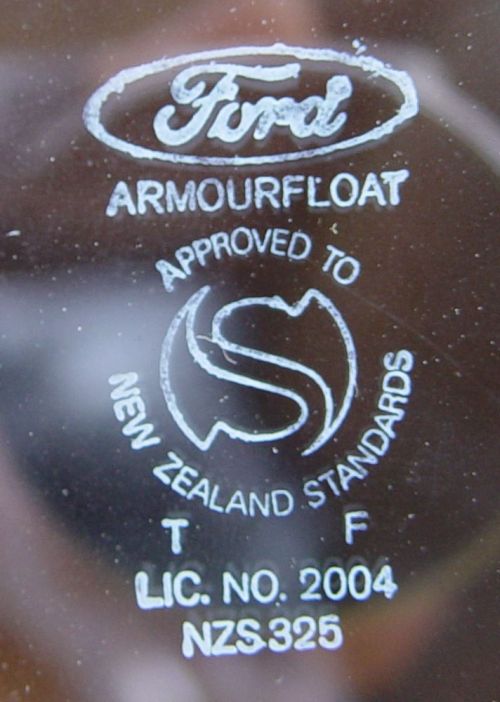 |
||||||||||||||||||||||||||||||||||||||||||||||||||||||||||||||||||||||||||||||||||||||||||||||
|
Here are some more examples of Australian glass. |
||||||||||||||||||||||||||||||||||||||||||||||||||||||||||||||||||||||||||||||||||||||||||||||
 |
||||||||||||||||||||||||||||||||||||||||||||||||||||||||||||||||||||||||||||||||||||||||||||||
|
This is ‘ARMOURGLAS’ on an April, 1970 XW Falcon and, as another example, corresponds to the date coding described above. |
|
Whereas these two examples below show the form of Armourglas with and without the ‘Pilkington’ badge. Both are from 1972 cars, but different quarters. The Pilkington badge was introduced between these two quarters. |
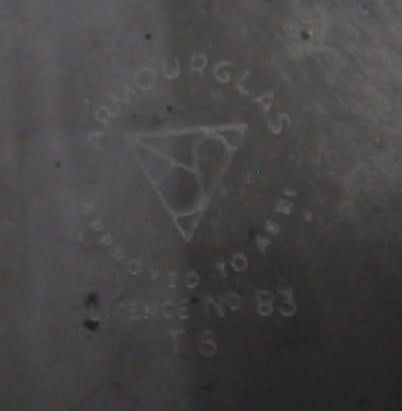 |
|||
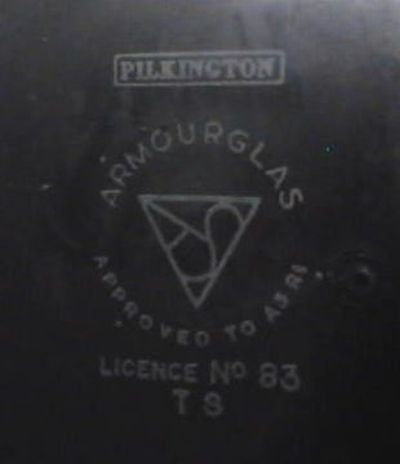 |
|||
|
In 1973, Pilkington changed from using the name ‘Pilkington’ on their glass to the symbol which is shown in the first picture. Some 1973 cars could end up with both 1972 and 1973 marked glass on the same car, as in this XA RPO which was a later 1973 car, yet has some 1972 glass. |
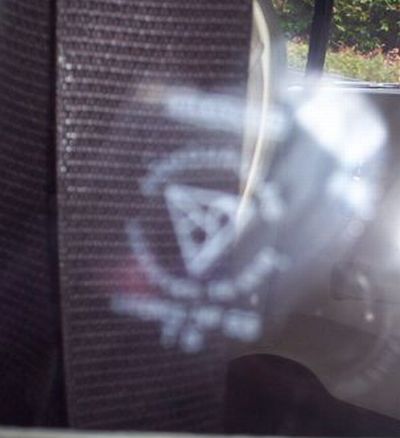 |
|||||
 |
|||||
|
The Pilkington symbol. |
|||||
 |
|||||
|
Here is the rear window from a hardtop. |
|||||
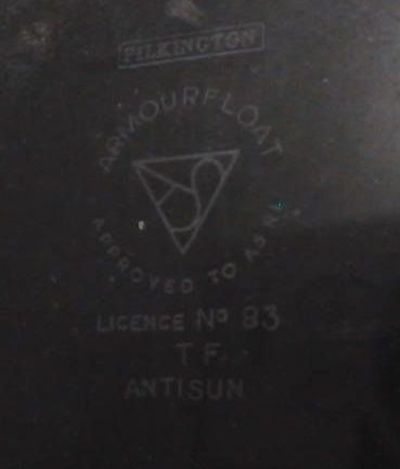 |
|||||
|
Note that the glass is now called ‘ARMOURFLOAT’ which now has eleven letters, but the years still count from the first letter, this being a 1973, fourth quarter piece of glass. This is also ‘ANTISUN’ glass, which means it is tinted, something no doubt well needed on the big flat pane on the rear of the hardtops. |
|||||
|
Earlier cars, like this 1969 XT GT, have a different and quite stylish marking. |
|||||
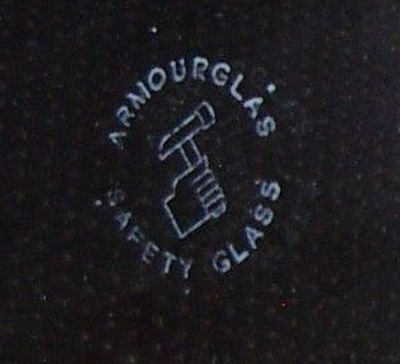 |
|||||
|
The year code holds true - 1969 - as does the first quarter dot under the ‘S’ in ‘SAFETY’. |
|||||
|
At some point, the XT GT needed a glass panel replaced and it was, with this fourth quarter of 1971 pane. |
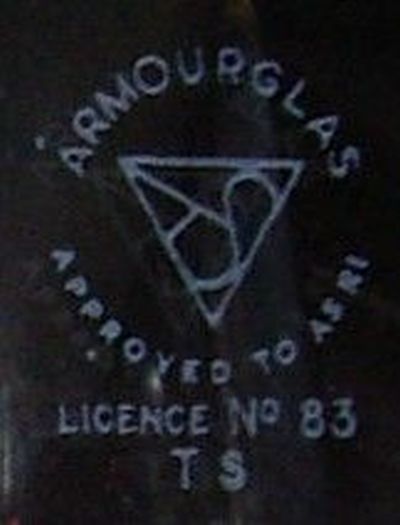 |
||||||||||
|
Here is another photo of the early glass. |
||||||||||
 |
||||||||||
|
Here is some later glass, as fitted to a 1976 P6 LTD, a model whose production ran from 1976 until 1979. |
||||||||||
 |
||||||||||
|
Pilkington changed the lettering to that shown above. Having shortened the previous ‘APPROVED’ to ‘APP’ they flipped the months and quarters. The dots under the ‘ASRI’ signify the quarters of the year, and the dots under the ‘APP’ signify the month in the quarter. |
||||||||||
|
The letters under the ‘TOUGHENED’ signify the year, and if there is no dot, it refers to the year 0. |
||||||||||
|
Hence the above glass was struck in October, 1976. |
||||||||||
 |
||||||||||
|
And this is September, 1976. |
 |
|||||||
|
And from a 1978 ZH Fairlane, glass dated March, 1978. |
|||||||
|
The glass below from 1979 has a changed approval line, now saying ‘APP. AS 2080’. ASRI was replaced by Australian Standard 2080, but the dot dating scheme still holds. This is February, 1979 glass. |
|||||||
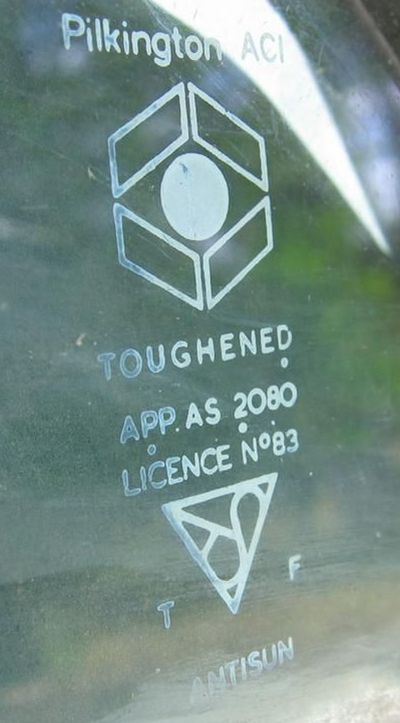 |
|||||||
|
It is worth pointing out that during the eighties, Pilkington changed the way they dated glass by year. In the examples above, the glass dates from Year 1 to Year 0. In the eighties it changed to being dated from Year 0 to Year 9 to more logically cover the decade of production. |
|
Back to contents |
|||
|
[Australian Ford Register UK] [History] [The Cars] [Members] [Bits and Pieces] [Contents] [Model Changes - Dashes] [Vinyl Roofs] [Doorhandles - Tail lamps - Glass] [Underneath] [Underneath 2] [Thorn Red] [Spoilers - Horn Cars] [Styling - Bonnets] [Grand Sports] [Metricification] [Grand Sport details - P5 LTD] [Scoops and vents] [Wheels] [The other XR8 - P6 LTD] [Superbird] [Compliance Plates] [Engines] [Engines2] [Rust] [Stampings] [Falcons] [Literature] [Some UK background] [One owner] [Bits and Pieces 2] [Untitled124] [Links] [Visitors] [Events] [AusCCA] [Site History] |